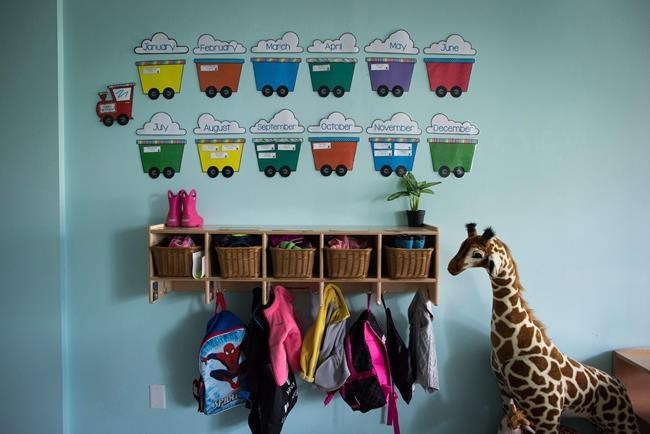TORONTO — Ninety-two per cent of licensed child-care operators in Ontario have signed on to the national $10-a-day child-care program, The Canadian Press has learned.
Nov. 1 was the deadline for providers to decide – it had been extended from the original date of Sept. 1 to try to get higher uptake – and government sources say just seven per cent decided to opt out, while one per cent did not make a decision
The government sources say a lot of money has already started flowing back to parents to rebate some of the fees they have paid since April.
Parents are set to receive rebates of up to 25 per cent retroactive to April 1 and a further fee reduction of 50 per cent, on average, by the end of the year. Fees are set to drop to an average of $10 a day by September 2025.
The sources say the child-care centres that didn't decide either way can still opt in for 2022 until the end of the year, which is also the deadline for opting in for the next year of the program.
The government is now working on a discussion paper aimed at establishing a new funding formula for the program for 2024 onward, and is planning to start consultations on how to create tens of thousands more child-care spaces as well as recruit and retain more staff.
Carolyn Ferns, the policy co-ordinator for the Ontario Coalition for Better Child Care, said recently that the government needs to develop a truly cost-based funding formula, with a budget submission process.
"I think that really they need to make those consultations as open and transparent as possible," she said.
"We need to bring in stronger accountability measures. I mean, this is billions of dollars of public funding, and we need it to be really, absolutely unassailable that it's being well spent. So I think that that's going to be the challenge over the next year."
The Ministry of Education made a number of changes to the funding model for this year and next, to try to ease concerns – largely from for-profit operators – about operators' ability to opt in and still run their businesses. The changes brought in a simple "revenue replacement" model, meaning once parents see their fees cut in half, operators will receive that amount from the government to make them whole.
The ministry removed previous language about capping "undue" profits and a list of ineligible expenses such as property tax that had some operators worried that they wouldn't have enough money to make those payments if they opted in to the program and their revenue from parent fees was cut.
This report by The Canadian Press was first published Nov. 7, 2022.
Allison Jones, The Canadian Press


